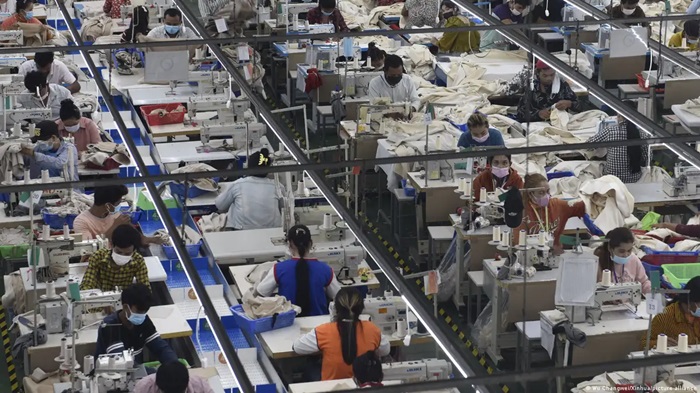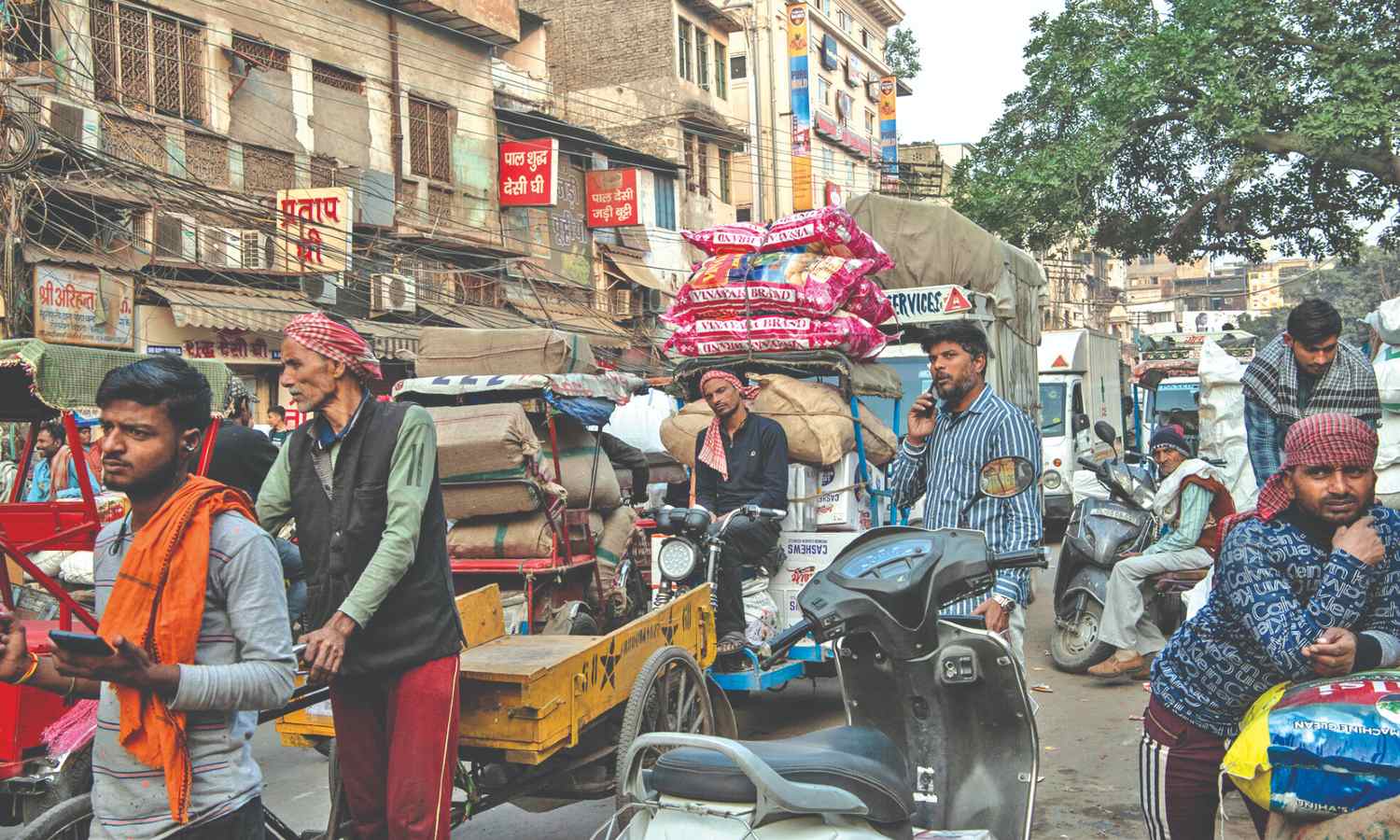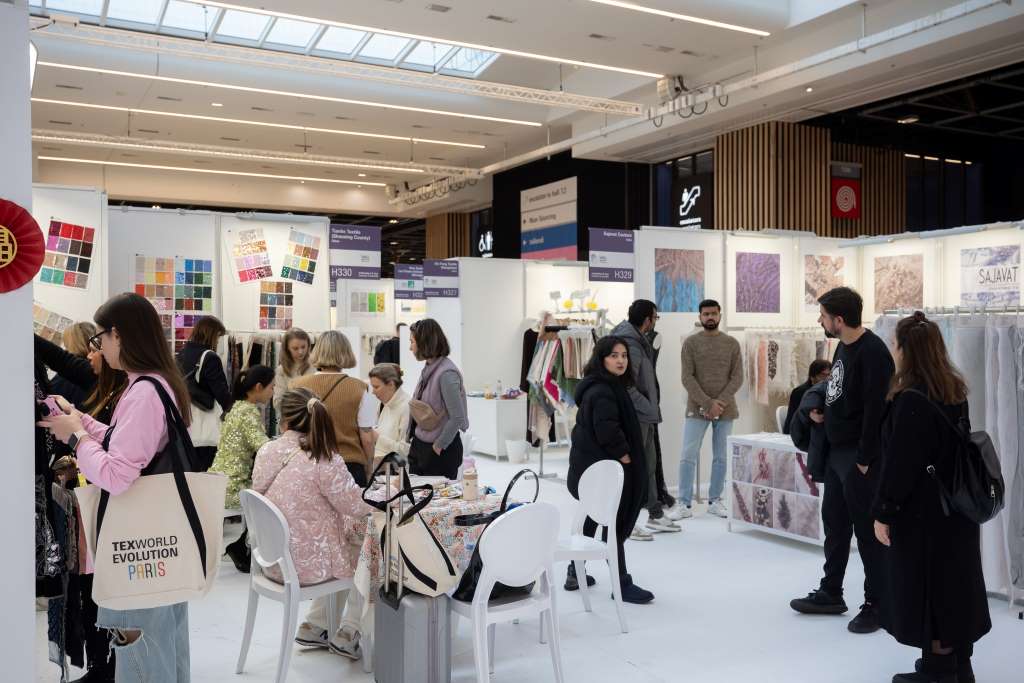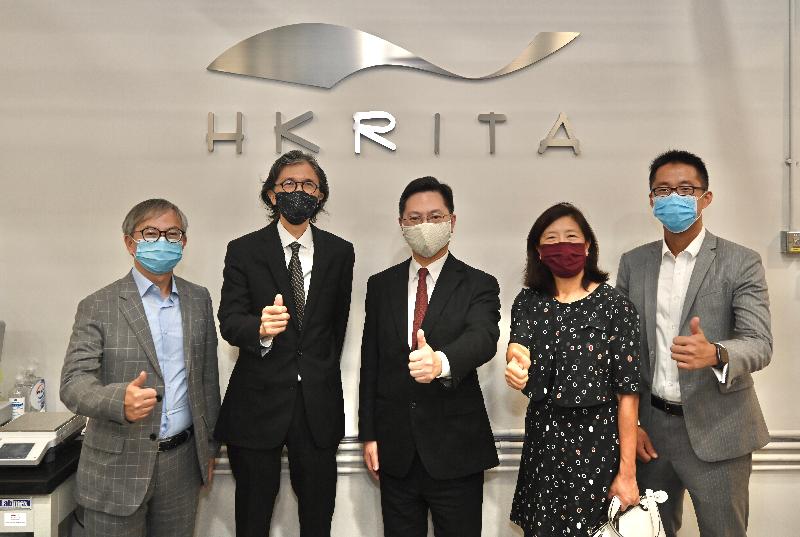FW
In the midst of the US-China trade dispute, hundreds of Chinese companies will be making their way to Toronto later this month to participate in Canada’s largest apparel and textile trade show, Apparel Textile Sourcing Canada (ATSC), from August 20-22, at the Toronto International Centre.
The show will include a first-of-its-kind showcase of top brands from China, called Avenue ATS. This will feature leading apparel brands in China, looking for partners to help grow their fashions globally.
ATSC will feature over 500 international exhibits, three days of seminars and panels, an on-site business matchmaking service and a spectacular fashion show spotlighting established and up-and-coming Canadian designers. More than 5,000 visitors are expected to attend the three-day event including apparel and fashion executives, influencers, designers, retailers, importers, wholesalers, merchandisers, buyers and suppliers.
This year’s event will include the addition of the China Brand Show, coming to Canada for the first time as a part of ATSC and adding categories such as accessories, giftware, home electronics, footwear, luggage and housewares and general merchandise.
ATSC is supported by many international governments and associations, headed by the China Chamber of Commerce for Import and Export of Textile and Apparel (CCCT) and the Bangladesh High Commission on behalf of the Export Promotion Bureau and the Bangladesh Garment and Manufacturers Export Association. The event is also supported by the Taiwan Textile Association, the Federation of Indian Chambers of Commerce and Industry (FICCI), India’s Apparel Export Promotion Council (AEPC) and TFO Canada, experts in trade for developing countries.
India’s decision to double tax on textile imports from China will benefit the Bangladesh apparel industry as it will enable the country to export more products to India. Bangladesh’s RMG exports rose 10 per cent year-on-year in 2017-18 fiscal year. India’s decision will help Bangladesh further augment its growth in apparel exports this fiscal.
India's imports of textile products from Bangladesh, Vietnam and Cambodia also jumped in the last few years as they are not subject to any duty under free trade agreements (FTA) signed by India with these countries. The 20 per cent duty India imposed on textile products will not be applicable to products sourced from those countries due to the FTA.
Nanollose has come up with an innovative method to produce rayon. Instead of cutting down trees or harvesting plants and dousing it with harsh chemicals, just let microbes chow down on biomass that would have otherwise been wasted. It takes just a few weeks for the microbes to turn biomass into usable cellulose.
Initially, the company fed coconut leftovers shipped in from Indonesia to its hungry microbes, it is now looking at other options as it prepares to enhance the production of rayon. Another advantage of Nanollose’s is that it can be processed by existing industrial equipment. Manufacturers who want to switch from wood- or plant-derived cellulose to the microbe-produced alternative won’t have to do any re-tooling at their mills.
Another advantage of this method is that it can be processed by existing industrial equipment. Manufacturers who want to switch from wood- or plant-derived cellulose to the microbe-produced alternative won’t have to do any re-tooling at their mills.
In retaliation to President Trump’s protectionist trade policies, the European Union has levied 25 per cent tariff on US-made denim. This may affect smaller US-based denim companies, many of whom focus on higher-end apparel. Larger businesses such as Levi Strauss may largely escape the impact since most of their products are made overseas and wouldn't be subject to the tariffs, which came into effect in June.
Trade data shows, blue jeans form a tiny part of the US exports. The nation exported jeans worth over $40 million to Canada, its largest market, in 2017. Before trade tensions rose, some US denim companies had been hoping to boost their presence overseas.
The industry had been struggling even before the trade war began. Two major denim mills closed down including Cone Denim's plant in Greensboro, N.C., which was the last American factory to make high-end denim fabric on a large scale. Several factories in Los Angeles had shut down and moved to Mexico after California raised its minimum wage.
Amfori and the Confederation of Indian Industry (CII) will cooperate in the areas of sustainability and open trade. They will jointly support members as they endeavor to improve sustainability in their supply chains. They will also work together to foster a policy environment that increases trade and economic ties between India and the European Union.
The two organisations will establish regular communications mechanism on trade policy questions and develop joint programs and actions to benefit their members. Amfori and CII will develop specific programs to increase collaboration across a broad spectrum of international trade issues.
Under the agreement, small and medium-sized companies will receive specific support by both organisations to unleash new opportunities in the global economy. CII and Amfori will also encourage their respective members to seek membership in, and access to, the services provided by the other association.
The Confederation of Indian Industry works to create and sustain an environment conducive for industry growth, partnering industry and government alike through advisory and consultative processes. Amfori is a leading global business association for open and sustainable trade. It brings together over 2,300 retailers, importers, brands and national associations. The work enables organisations to enhance human prosperity, use natural resources responsibly and drive open trade globally.
Bangladesh has emerged as the next hot spot for apparel sourcing. The country’s readymade garment sector has enjoyed rapid expansion, reaching an audience of international buyers and contributing to 83 per cent of the nation’s GDP.
Bangladesh has 796 woven fabric manufacturers, 31 of which are denim mills and 22 are producing home textiles, with an annual capacity of some 3,850 million meters of fabric. The country is also home to 240 dyeing, printing, and finishing mills, producing a further 3,170 million meters of fabric per annum. However, demand from domestic manufacturers of woven apparel is currently far outstripping supply. So the country needs to further develop its textile manufacturing capabilities.
Bangladesh has a limited supply of domestic cotton fibers, producing some 1,28,000 bales of cotton domestically, but importing in excess of seven million bales a year, and is reliant on the import of manmade fibers including polyester, viscose, and Tencel.
The readymade garment industry needs to redress the balance between imported woven fabrics and those domestically produced. With 60 per cent woven fabrics being imported, it means that approximately 45 per cent of Bangladesh’s woven apparel production is facing lead-time pressure, as imported goods will incur lead times of anything between 28 and 42 days.
"The Union Ministry of Textiles recently introduced Amended Technology Upgradation Funds Scheme (ATUFS) that will offer wider financial and operational benefits to all textile players. The scheme, first introduced in 1999, to improve operational efficiency of textile units, was later upgraded to encourage new investments in the sector. The scheme has so far, attracted billions of rupees in investment. Under this scheme, co-operative banks can lend money to textile units for technology upgradation. The scheme, set to benefit the synthetic textile sector immensely, has also been extended to limited liability partnership (LLP) firms."
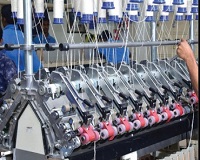 The Union Ministry of Textiles recently introduced Amended Technology Upgradation Funds Scheme (ATUFS) that will offer wider financial and operational benefits to all textile players. The scheme, first introduced in 1999, to improve operational efficiency of textile units, was later upgraded to encourage new investments in the sector. The scheme has so far, attracted billions of rupees in investment. Under this scheme, co-operative banks can lend money to textile units for technology upgradation. The scheme, set to benefit the synthetic textile sector immensely, has also been extended to limited liability partnership (LLP) firms.
The Union Ministry of Textiles recently introduced Amended Technology Upgradation Funds Scheme (ATUFS) that will offer wider financial and operational benefits to all textile players. The scheme, first introduced in 1999, to improve operational efficiency of textile units, was later upgraded to encourage new investments in the sector. The scheme has so far, attracted billions of rupees in investment. Under this scheme, co-operative banks can lend money to textile units for technology upgradation. The scheme, set to benefit the synthetic textile sector immensely, has also been extended to limited liability partnership (LLP) firms.
Roadblocks in the way
The ATUFS was launched in place of erstwhile Technology Upgradation Fund Scheme (TUFS) in 2016 for seven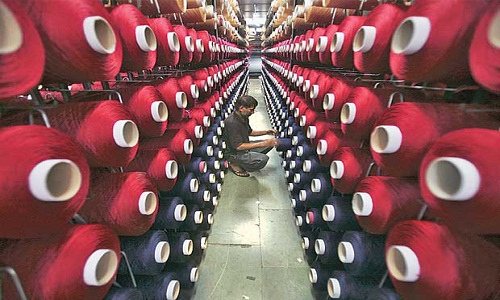 years ending March 2022. The financial and operational parameters and implementation mechanism for ATUS were notified in February 2016. The government provides credit-linked subsidy under the scheme.
years ending March 2022. The financial and operational parameters and implementation mechanism for ATUS were notified in February 2016. The government provides credit-linked subsidy under the scheme.
Interestingly, the scheme was fraught with difficulties. Therefore, the Ministry of Textiles allowed, for the first time textile units to benefit from this scheme in addition to other benefits availed from the state governments.
Subsidy prospects
Under the new scheme, those who had applied for unique identification number (UID) under revised and restructured technology upgradation fund scheme (RRTUFS) before January 12, 2016 but UIDs could not be issued due to non-availability of funds, will be given a one-time opportunity to apply for subsidy under ATUFS.
The revised technology specification for machinery of the eligible segments would be prescribed annually in advance by the technical advisory and monitoring committee (TAMC) effective from April 1 of the year. The revised guidelines will allow textile commissioner to constitute a technical committee which will assist the TAMC to prepare an indicative list of machinery manufacturers. The committee will meet monthly to update the list of machineries and manufacturers. Most importantly, accessories, attachments, sample machines and spares procured from other manufacturers enlisted in the indicative list will also be eligible for subsidy up 20 per cent of basic cost of machinery.
Except in the case of merger, acquisition, amalgamation or takeover of an entity, the plant and machinery bought with TUFS subsidy shall not be disposed off before 10 years of the date of purchase without prior approval of the textile commissioner.
Government initiatives
The government has been assisting textile players with timely policy support. In June last year, it announced a Rs 60-billion package which helped attract Rs 270 billion fresh investment till early March 2018.
Apex industry body, the Confederation of Indian Textiles Industry (CITI), reported a 4 per cent decline in textile and apparel exports at Rs 2,279 billion for the financial year 2017-18 from Rs 2,382 billion the previous year. While textile exports declined marginally by one per cent to Rs 1,202 billion at the end of fiscal 2018 from Rs 1,217 billion a year ago, apparel exports saw a sharp drop of 8 per cent to Rs 1,077 billion as against Rs 1,165 billion in the fiscal 2017.
The 18th Knit Show, a three day-long event organised from August, 5-7, with more than 300 exhibitors, has brought positivity in Tirupur’s apparel and textile industry. Top technology companies, like Dhaval Colour Chem (DCC), Grafica Flextronica, Mehala Machines, Kansai Special, Cheran Machines, and Zedex, from different segments of textile and apparel industry, displayed their latest offerings at the show. Cutting room solution, circular and flat knitting machines, sewing, printing (digital as well as screen printing) fabric and trim companies too participated in the event.
Exhibitors said market in Tirupur is now picking up as they expected good business in coming days. Exhibitors also informed since last two months, they have been getting good inquiries from apparel manufacturers. Many small and as big companies’ shared the positive reflection in their markets revealing their plans of expanding capacity. Companies like Zydex Industries, EPTA India are also working aggressively on future projects.
The Gujarat Chamber of Commerce and Industry (GCCI) has urged the the Ahmedabad Municipal Corporation (AMC) to utlise land lying unused in old textile mills to convert into mini industrial estates for small businesses. This will reduce the capital cost of investors so that even small-scale entrepreneurs can afford them, or else the cost of land would exceed other costs, making the project unviable. GCCI also asked the AMC to improve the road, water supply, and sewage infrastructure in industrial estates of Naroda, Vatva, Odhav, Narol, and Kathwada.
The apex body for trade and industry also suggested proper planning should be undertaken for parking of vehicles while allowing construction of commercial and residential buildings in the city. The chamber complained that illegal parking fee is being charged increasingly at many places in the city. With a view to ease commuting of industry workers, the GCCI urged the AMC to increase the frequency of buses where the workers are in significant numbers.
New Zealand Merino Company has forged a partnership with Havelock Wool, an American wool insulation company. The US insulation market is huge. Havelock Wool, launched in 2013, sees a need and demand for a better insulation option since the products available are driven by manufacturers’ race to keep costs down. Also materials in homes contribute to poor indoor air quality, much worse than the air outside. So those who spend much of their time indoors are vulnerable. And wool responds to the challenges in the built environment by managing moisture, absorbing indoor air contaminants and noise.
Though wool insulation is a premium product, targeted at high-end consumers, and there are some economic hurdles to negotiate, wool is seen as a natural high performance option. Supporting traditional uses for wool, New Zealand is seeking out new markets and categories to realise the true value of ethically grown, sustainable New Zealand wool fiber. The aim is to reposition wool fiber as a premium natural alternative to toxic synthetic fiber. And that is being done by focusing on a strategic alignment with leading global brands to tell a positive New Zealand wool story to the world.



